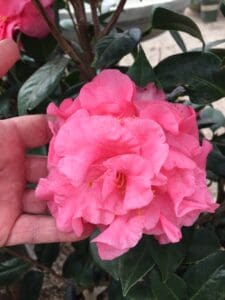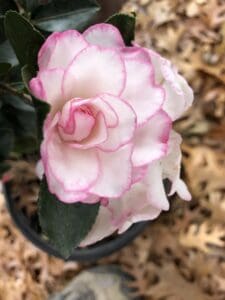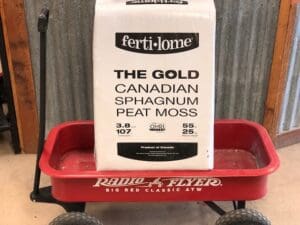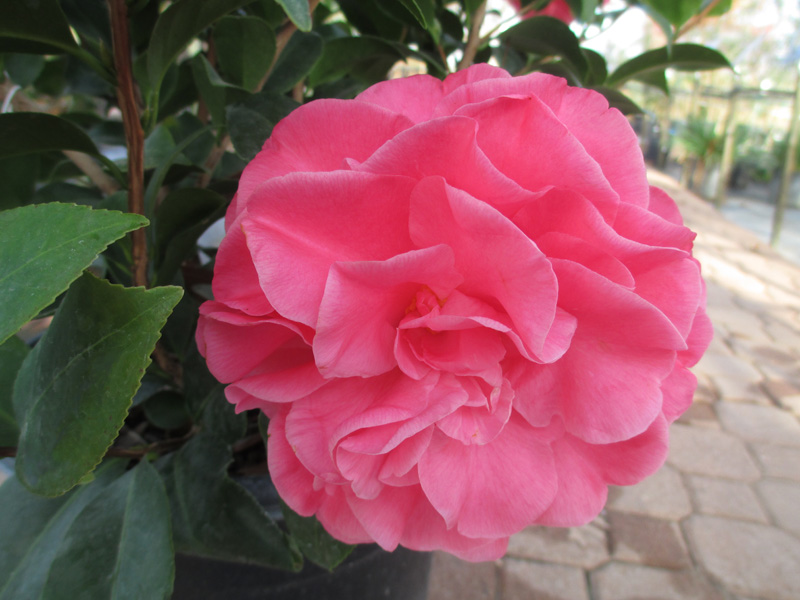Central Texas has very few plants which bloom in the winter. Azaleas bloom spring and fall, with some new varieties blooming all summer. Loropetalum blooms in February, as does Texas Scarlet Flowering Quince and Texas Redbud. But what about winter bloomers?
Types of Camellias
Camellias come to us from eastern and southern Asia. The ornamental Camellias which do well in our area are Japanese Camellia (Camellia japonica) and Sasanqua Camellia (Camellia sasanqua).

One species, Camellia sinensis, is the plant from which our tea leaves come.

The most familiar of the camellias is the Japanese Camellia. It has an upright growth habit and can reach 8’-15’ tall by 5’-10’ wide under ideal conditions. Camellias prefer shade to dappled shade with some protection from the drying northwest winter winds. This large evergreen shrub blooms from October to March, depending on the variety. Flowers are large, often double, and very showy. Bloom color ranges from white to all shades of red and pink. As they bloom in the winter, open flowers may be damaged by a freeze. But, if the buds are tightly closed, they will not be affected.

The growth habit of the Sasanqua Camellia is a mounding, graceful form, and will grow to an average of 2’-5’ tall and wide, or taller under ideal conditions. Their single blooms appear from autumn into winter, depending on variety. They are somewhat more resistant to low temperatures than the Japonica, and are hardy from Zone 7-9.
Growing Requirements
 The best time to plant Camellias is October through March, although they may be planted at any time of the year with proper care. All Camellias prefer a well-drained, acidic soil rich in organic matter. Prepare the soil before planting by incorporating lots of organic matter like compost and peat moss. We usually use 50% peat moss 50% soil to keep the soil acidic. Dig the hole twice as wide as needed, no deeper than the root ball. Plant them no deeper than they were grown in the container. A thick layer of mulch over the area will provide more uniform temperature and moisture for your plant. Lightly fertilize camellias after they finish blooming with an acid fertilizer.
The best time to plant Camellias is October through March, although they may be planted at any time of the year with proper care. All Camellias prefer a well-drained, acidic soil rich in organic matter. Prepare the soil before planting by incorporating lots of organic matter like compost and peat moss. We usually use 50% peat moss 50% soil to keep the soil acidic. Dig the hole twice as wide as needed, no deeper than the root ball. Plant them no deeper than they were grown in the container. A thick layer of mulch over the area will provide more uniform temperature and moisture for your plant. Lightly fertilize camellias after they finish blooming with an acid fertilizer.
Prune camellias, if needed, right after flowering, as next year’s buds will form on this season’s growth.
Camellias also may be grown successfully in pots. Dappled shade, and protection from winter winds are recommended. Soil should be well-drained, with peat moss added to increase acidity. A 50/50 peat moss/potting soil is a good mix for acid loving plants. Do not use a saucer. The pot needs to drain well, and the roots will rot if they stand in water in a saucer. Fertilize after blooming with an acidic fertilizer, and again, only prune right after blooming.
Enjoy the winter blooms of these evergreen plants and the beautiful glossy foliage year round in your garden. This old Southern favorite is sure to please!




